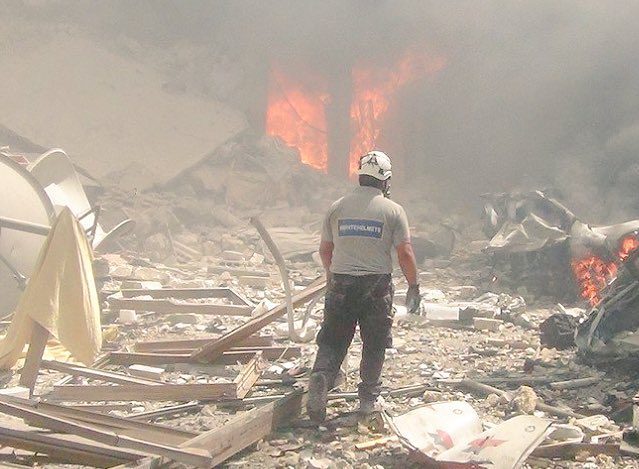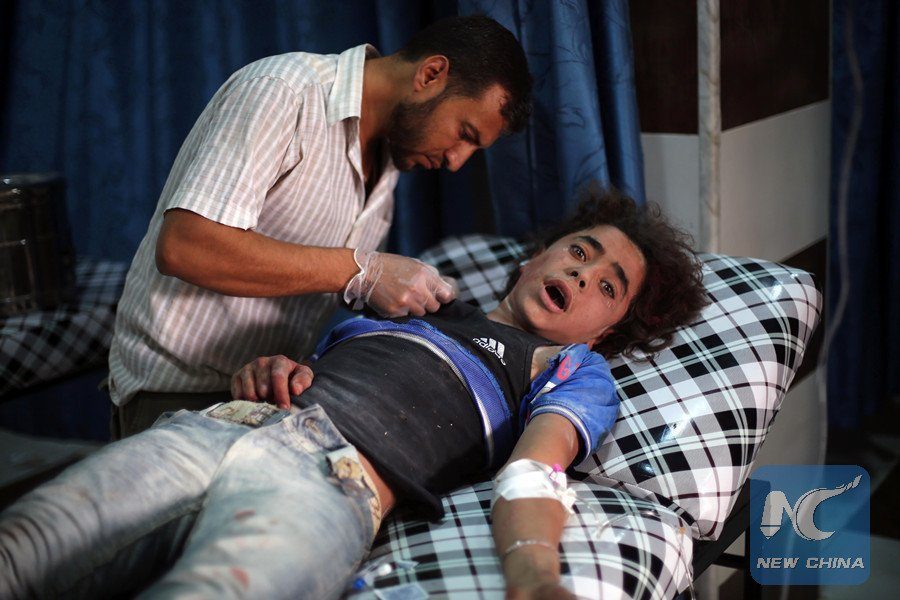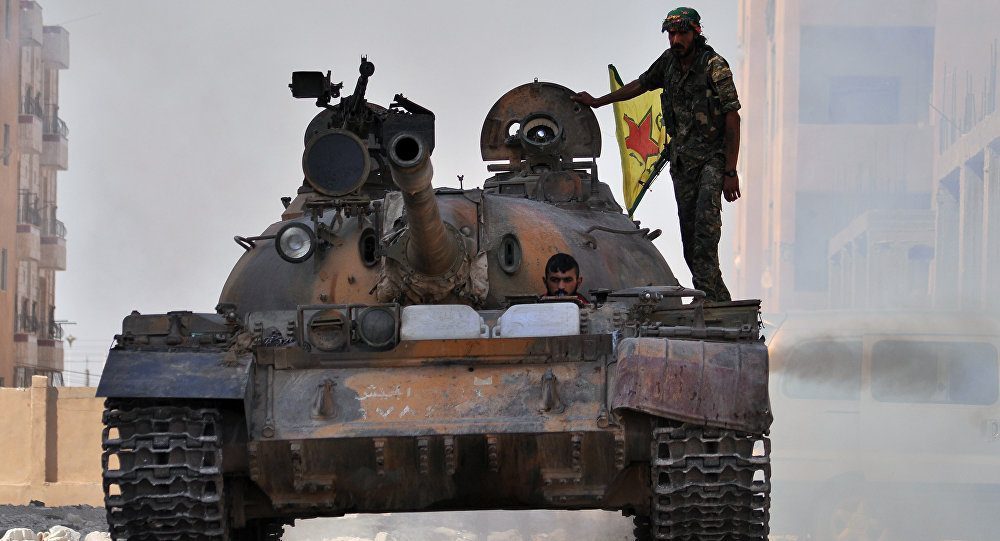
France said it has scientific proof that the Assad regime was responsible for a suspected chemical attack that killed 87 people earlier this month, and that Sarin gas was the agent used in the attack, according to a declassified report.
More than 87 civilians were killed in Syria in a new chemical attack carried out by Assad regime’s air force on the rebel-held Idlib province on April 4.
The Syrian Observatory for Human Rights said the attack caused many people to choke or faint, and some had foam coming from their mouths, citing medical sources who described the symptoms as possible signs of a gas attack. All the children were under the age of eight.
Medical sources said that more than 300 other civilians were injured in this attack, and many of them were transferred to hospitals near the Turkish borders or inside Turkey, where poison tests were made.
In a sharp escalation of the U.S. military role in Syria, two U.S. warships fired dozens of cruise missiles from the eastern Mediterranean Sea at the airbase controlled by Assad regime forces from which the attack as carried out.
Trump ordered the strikes just a day after he pointed the finger at Assad for this week’s chemical attack.
“Tonight I ordered a targeted military strike on the airfield in Syria from where the chemical attack was launched.”
“Years of previous attempts at changing Assad’s behavior have all failed and failed very dramatically,” Trump said on Thursday.
Russia condemned the strikes, saying Washington’s action would “inflict major damage on US-Russia ties”, according to Russian news agencies.
But the US allies, including France, backed this move, calling for more pressure on Assad regime and blaming Russia for backing Assad accusing Putin of taking part in killing the Syrian civilians.
The new report
The six-page French document drawn up by France’s military and foreign intelligence services – said it reached its conclusion based on samples they had obtained from the impact strike on the ground and a blood sample from a victim.
French Foreign Minister Jean-March Ayrault said on Wednesday that chemical analysis of samples taken from the rebel-held village of Khan Sheikhoun “bears the signature” of Assad regime.
“We know, from a certain source, that the process of fabrication of the samples taken is typical of the method developed in Syrian laboratories,” Foreign Minister Jean-Marc Ayrault told reporters after presenting the findings to the cabinet.
“This method is the signature of the regime and it is what enables us to establish the responsibility of the attack. We know because we kept samples from previous attacks that we were able to use for comparison.”
Among the elements found in the samples were hexamine, a hallmark of sarin produced by the Syrian government, according to the report.
It said the findings matched the results of samples obtained by French intelligence, including an unexploded grenade, from an attack in Saraqib on April 29, 2013, which Western powers have accused the Assad government of carrying out.
“This production process is developed by Syria’s Scientific Studies and Research Center (SSRC) for the regime,” the report said.
“This method bears the signature of the regime and that is what allows us to establish its responsibility in this attack,” Ayrault also said, adding that France is working to bring those behind the “criminal” atrocities to international justice.
Carried out by the regime
Assad regime has denied that it has ever used chemical weapons against its own people. In the hours after the April 4 attack, it claimed the sarin emanated from a rebel-run chemical factory after it was bombed by the Syrian air force.
But the report, which lists some 140 suspected chemical attacks in Syria since 2012, also said intelligence services were aware of a Syrian government Sukhoi 22 warplane that had struck six times on Khan Sheikhoun on April 4 and that samples taken from the ground were consistent with an airborne projectile that had munitions loaded with sarin.
Ayrault added that French intelligence services showed that only Syrian government forces could have launched such an attack by a bomber taking off from the Shairat airbase.
“The regime’s air force … is the only one with these aerial capabilities,” Ayrault said.
“The French intelligence services consider that only Bashar al-Assad and some of his most influential entourage can give the order to use chemical weapons,” the report said.
The former head of Syria’s chemical weapons program said the orders to use sarin could only have come from the highest level.
“The chain of responsibility is always clear,” said Brig. Gen. Zaher al-Sakat, who served in the army’s Fifth Division until his defection in 2013.
“The order to use a nerve agent has to come from the Presidential Palace, and in this case that’s Assad. If it’s a lower level chemical like chlorine, then field commanders can give the order. But for something like this, it’s Assad.”
A senior French diplomatic source said Paris had passed the report on to its partners and would continue to push for a probe.
But Russia, which is the key backer for Assad, has said the gas was released by an air strike on a poison gas storage depot controlled by rebels.
“Russia’s position on the attack is unchanged. The Kremlin thinks as before that the only way to restore the truth of what happened in Idlib is an impartial international investigation. We regret that OPCW restraints so far from such an investigation,” spokesman Dmitry Peskov told reporters when asked about the French report.
Moscow was attempting to discredit the OPCW, the source said: “There is a propaganda effort by Russia to say that the OPCW’s work is not credible.”
The Syrian crisis began as a peaceful demonstration against the injustice in Syria. Assad regime used to fire power and violence against the civilians and led to armed resistance. 450.000 Syrians lost their lives in the past five years according to UN estimates, and more than 12 million have lost their homes.



